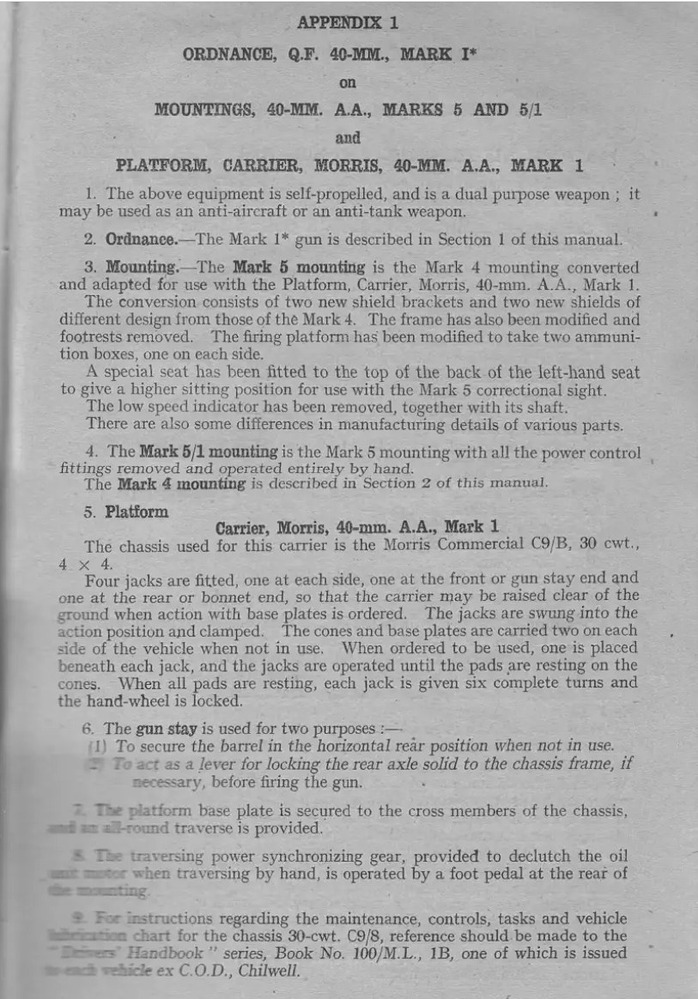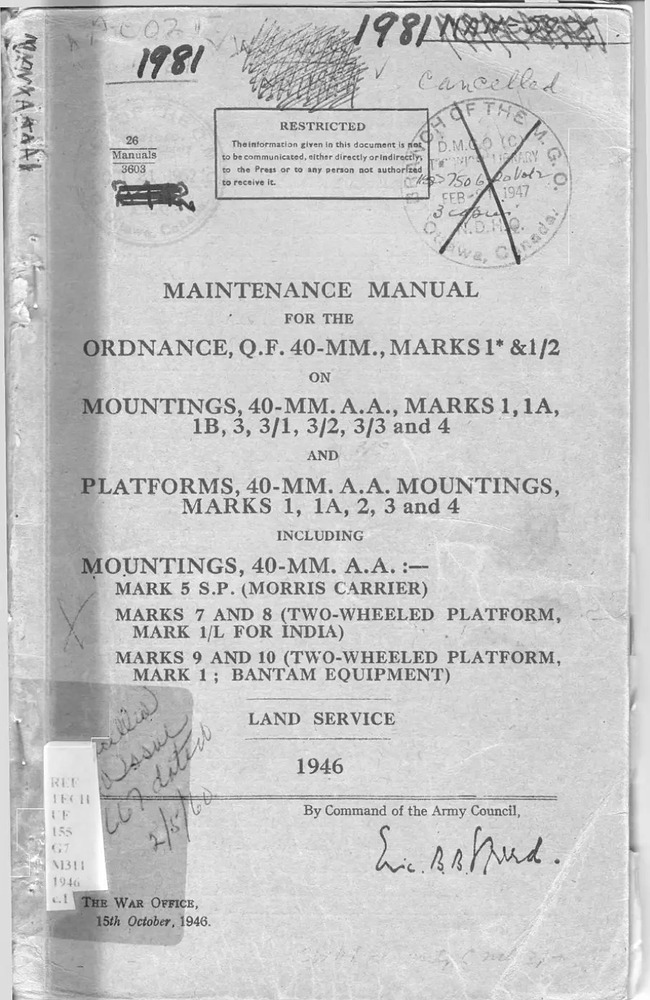- Yes
- No
Introduction:
Hi everyone, in todays post I am going to suggest the big brother to the Truck, 15-cwt, 4x2, A.A., the Carrier, 30 cwt, SP, 4×4, 40 mm AA (Bofors) also known as the Morris-Commercial C9/B Self-Propelled 40mm Bofors. This 40mm SPAA served in the british armed forces during the later phases of ww2, as it managed to enter production before D-day, allowing it to see mass service in the L.A.A regiments of the British army, where it replaced its smaller 20mm equipt ilk. The vehicle was favoured over the 20mm polesten Spaa due to its larger shell that was also capable of self destructing, allowing more reliable hit to kill against air craft. The design was quite sucessful, and it continued to see service for several years into the post war period, allowing it to see limited service in the korean war.
History:
Construction of the first prototype was completed by late 1942, and subsequently took part in trials. The trials were successful and impressed the British army sufficiently for the the SPAAG to enter production. A total of 1680 vehicles were built in total during the war years where it was used in its intended role, as a mobile gun platform for the defense of convoys and columns against air attack. It was common practice for light anti-aircraft regiments were usually outfitted with a battery of six self-propelled guns.
To carry the gun the chassis was lengthened slightly for this new variant. well retaining the engine and drive systems remained the same as the morris C8 base vehicle, retaining the 70 hp Morris EH, 4-cylinder 3.5 liter petrol engine mounted at the front, in additrion to retaining its 4×4 configuration.A simplistic, almost skeletal body was installed on the frame, including a cab area at the front that was open to the elements, even lacking doors, with seats for four personnel. Two seats were placed on the right (one for the driver) and two on the left. A canvas cover could be placed over the cab area to provide some protection from the elements. Only the very earliest of vehicles had a windshield installed.A fully enclosed cab was avoided as its addition would have prevented the gun from having a 360-degree arc of traverse. Even the steering wheel was hinged so it could be folded out of the way of the gun. The 40 mm gun, with a shield, was mounted centrally on the chassis. A flat platform was constructed behind the gun, with stowage for 40 mm ammunition boxes over each of the back wheels. Pioneering tools and crew stowage were located under this flat platform. Apart from the gun shield, the vehicle was completely unarmored.
To provide a stable gunnery platform, four jacks were added to the chassis. One was at the front under the bumper, one at the rear, and one on the left and on the right on arms that folded out. Four conical ‘shoes’ were also used under the jacks to spread the weight of the vehicle over a wider area, with the combination of the two lifting the C9 off its wheels. Only the engine compartment at the front of the vehicle bared any resemblance to the C8 base vehicle, yet even this was distorted thanks to the stowage of the conical ‘shoes’ in stacked pairs on the fenders over the front wheels.
The vehicle sometimes towed a small, wooden two-wheel trailer with a canvas cover. This was likely used to tow extra supplies for the vehicle such as ammunition and possibly fuel. The vehicle was also often equipt with spare barrels for the 40mm, allowing them to be replaced if nessassary in the field.
The vehicles were assigned to all the L.A.A regiments during the course of the war and gradually phased out the Truck, 15-cwt, 4x2, A.A in service, as it offered advantages over the 20mm guns, in both hit to kill ratio, as well as possessing self destructing shells.
Historical Photos:
Morris Commercial C9/B Self Propelled Bofors Gun. Currently preserved at the Douglas Aviation Museum, Isle of Man. The manx regiment distingished themselves during ww2, and were one of the highest rated L.A.A regiments of the british army during the second world war.
Video showing a slideshow of historical photos, outlining this AA’s entire service history:
A British Bofors gun of 11th (Sphinx) Light Anti-Aircraft Battery (Royal Artillery) firing at Chinese positions on Hill 327 during the The Battle of Imjin River, before the 1st Battalion, The Gloucestershire Regiment went in to capture it:
Hide contents



Vehicle Specification:
Hide contents
Elevation range was from −5 degrees to +90 degrees and the most common bofors used was the bofors mk5, though other variants are known to exist.
Sources:
- Morris-Commercial C9/B Self-Propelled 40mm Bofors - Tank Encyclopedia
- https://www.iwm.org.uk/collections/item/object/205191933
- 29th Infantry Brigade (United Kingdom) - Wikipedia
- Morris Commercial C9/B Self Propelled Bofors Gun - AFV Walkarounds - Britmodeller.com post showing additional photos of the preserved example in the island of man
- https://www.flamesofwar.com/Default.aspx?tabid=110&art_id=408





